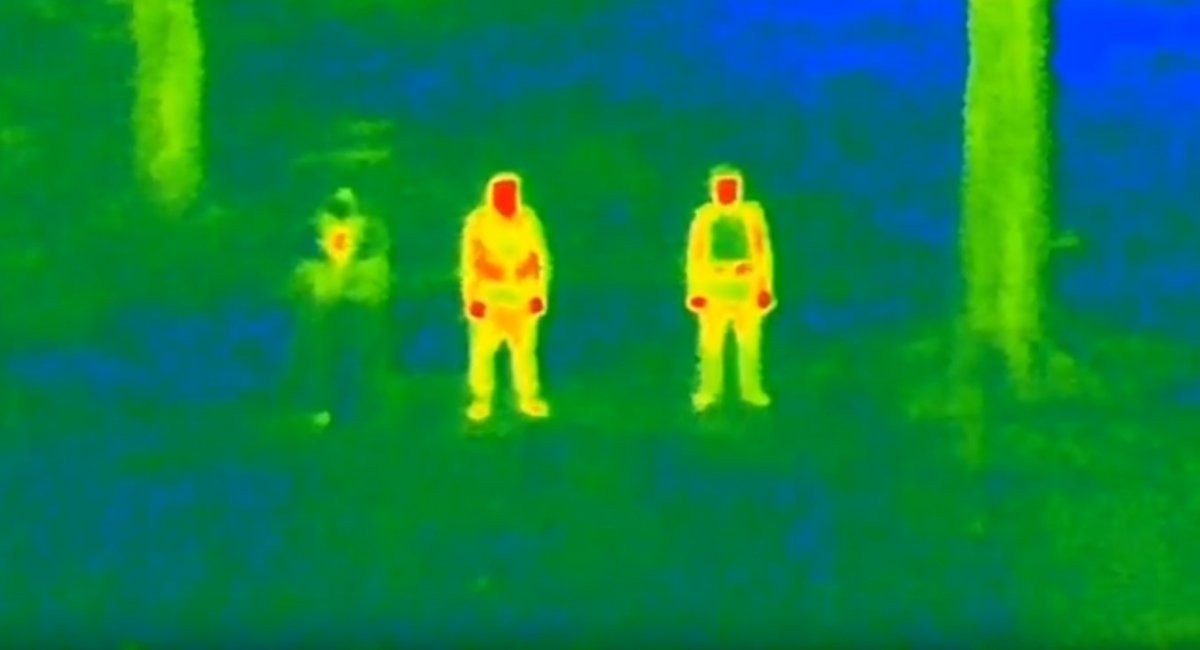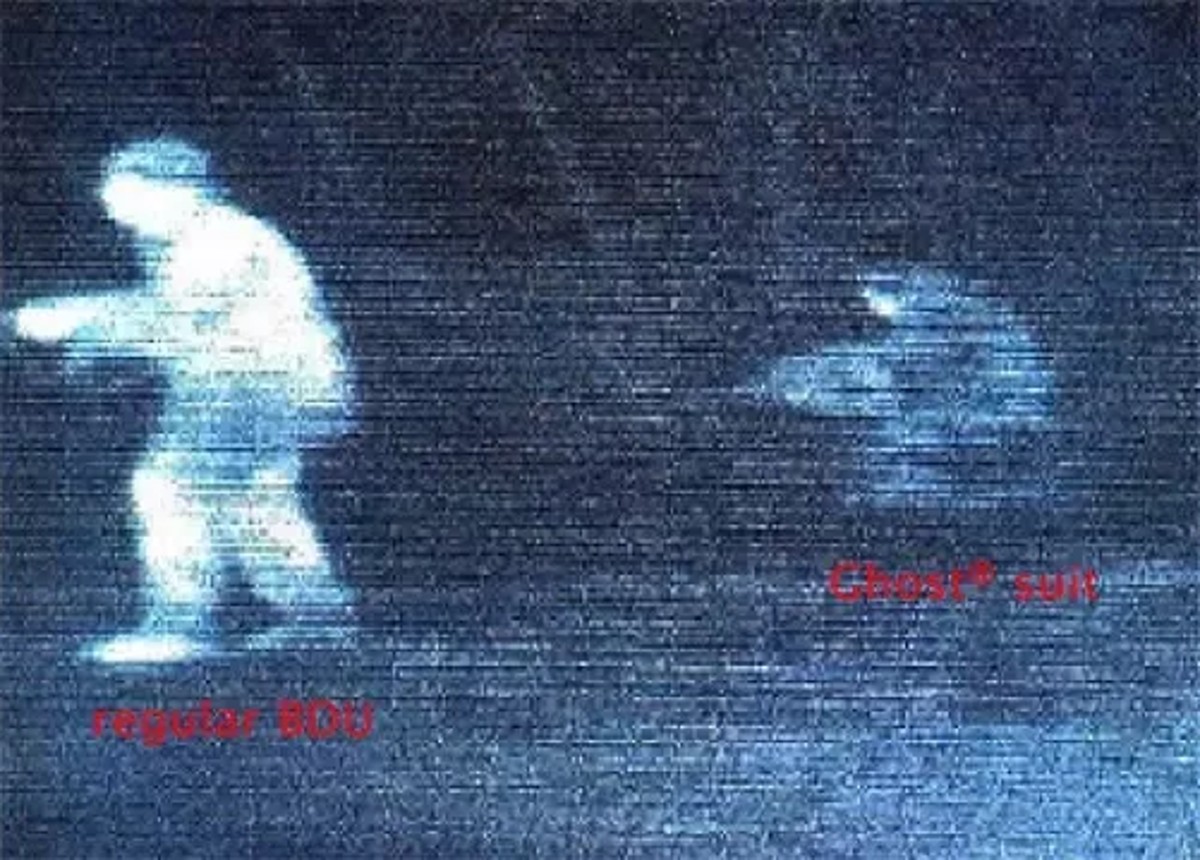Russia has initiated the large-scale production of cutting-edge camouflage “invisibility suits” to counter the surveillance abilities of FPV drones equipped with thermal imaging technology.
The production of these suits, which blur the wearer’s silhouette in the infrared spectrum, was announced by HiderX, the Russian developer company, to state-owned news agency TASS.
These advanced camouflage suits have entered serial production with an estimated output of 600 units per month. The demand for such equipment in Ukraine is reported to be exceptionally high.
The suits are crucial for night operations, enabling soldiers to move undetected and complete rotations without being exposed to enemy surveillance.
The Russian company said that the need for these invisibility suits is driven by the widespread use of FPV drones by the Armed Forces of Ukraine, most of which are equipped with thermal imagers.
These drones detect targets based on their thermal signatures, which become visible in 100-200 meters. The drones then autonomously lock onto the target. “There are also huge deliveries of night vision cameras with thermal imagers,” HiderX emphasized.
These technologies have posed a significant challenge for Russian troops, necessitating the development of effective countermeasures. Nonetheless, additional camouflage suits are still required along the lengthy 1,000 km line of contact.
This scarcity often forces Russian servicemen to share suits among themselves. For instance, it is common for a group of soldiers to rotate using the same kit, with one member returning and handing over the camouflage suit to another.
The effectiveness of these suits is attributed to the special treatment of the material and a unique pattern composed of broken lines. Depending on the size, the weight of the suits ranges from 280 to 400 grams, making them lightweight and practical for combat scenarios.
As the conflict continues, introducing these invisibility suits marks a key step in Russia’s efforts to enhance its troops’ survivability and operational effectiveness.
These suits aim to provide a tactical advantage in ongoing military operations by addressing the threats posed by advanced surveillance technologies.
‘Invisibility Suit’ For Soldiers On Ground
Over the past two years, the prolonged conflict in Ukraine has catalyzed significant innovations within the military establishments of Moscow and Kyiv. These innovations span various fields, from advancements in drone technology to specialized survival gear, reflecting a continuous effort to gain a tactical edge.
One of the most notable developments from both sides is the creation of modern camouflage suits designed to effectively conceal the wearer’s body heat.
This initiative aims to diminish the infrared signature emitted by soldiers, thereby countering the adversaries’ use of thermal imaging equipment.
F-16s “Sitting Ducks” For Russian MiG-31 Fighters? Putin Warns Of Consequences Over Fighting Falcons
Thermal imaging technology is pivotal on the battlefield, as it detects heat emitted by objects to identify and track soldiers, providing a considerable advantage in low-light conditions.
HiderX has not disclosed the specific materials used in its camouflage suit, referred to as the “invisibility cloak” (Cloak-Nevidimka). This cloak resembles a large trench coat with a hood.

According to Rebekah Koffler, a strategic military intelligence analyst and author of Putin’s Playbook, “The material itself has three layers: first, an internal layer reflecting infrared (IR) radiation from the user’s body; second, the middle layer absorbing IR radiation; and third, an external layer reflecting IR radiation from the external environment.”
Russia has been open about the development of this concealment cloak, signaling a strategic message to its adversaries.
As Koffler explained, the transparency about the cloak’s existence serves a purpose, suggesting that the Russians want their adversaries to know about this capability without necessarily revealing all the details.
At the same time, it is reported that Kyiv is working on camouflage suits designed to hide its troops at night. Both sides seem involved in a technological competition to enable their forces to operate without being seen.
Last year, Ukraine announced the creation of an “invisibility cloak” and revealed plans to produce 150 units per month, aiming for mass production. These cloaks are designed to shield Ukrainian soldiers from Russian thermal imaging technology.

Mykhailo Fedorov, Ukraine’s vice prime minister for new technologies, likened these cloaks to “invisibility cloaks in fairy tales” that have become a reality in Ukraine.
By blocking heat radiation, these cloaks render Ukrainian soldiers invisible to Russian thermal imaging devices, significantly enhancing their effectiveness, particularly during nighttime operations.
Forget J-20, China’s H-20 Stealth Bomber Threatens ‘Easy Penetration’ Of LAC; How Can IAF Respond?
Fedorov highlighted the cloak’s compact and lightweight design, weighing less than 2½ kilograms (5½ pounds). The cloak is also resistant to extreme temperatures, including snow, and protects against sun exposure.
In October 2023, Fedorov hinted at the potential use of these cloaks by Ukrainian snipers and special forces in combat missions against Russian forces.
However, it is important to note that these cloaks are intended for slow movement within a specific location and are unsuitable for rapid movement, as this can cause excessive heat release and minor leakage through the ventilation holes in the cloak.
- Contact the author at ashishmichel(at)gmail.com
- Follow EurAsian Times on Google News




